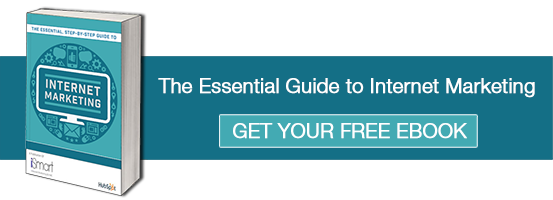
Valuable Tips for Creating Great Content for Lead Generation
February 2, 2018
Amazingly Effective Lead Nurturing Tactics
February 12, 2018This blog post is extracted by Neha Jain from our new eBook, “The Essential Guide to Internet Marketing”.
A good business website is not just a digital version of a brochure of your business. It is a marketing channel for your business, that is open 24/7. For your website to serve this purpose, it should have the capability to turn visitors into sales leads.
However, there is one problem.
You spend so much time on your business website—writing your homepage, products and services, publishing blog posts, and more—but you have no way to tell how effective your content is.
All of that traffic to your site isn’t generating any new business. People are visiting your site, but those visits aren’t leading to new customers — or even new sales leads.
So, what do you do? Simple: focus on conversion.
Right now, you are still at the top of your marketing funnel. You need to move down and start converting your website visitors into sales leads. To do this,
- You’ll need to come up with a compelling content offer for your prospects,
- Create a call-to-action to promote that offer, and
- Launch a landing page with a form for visitors to provide their information in exchange for that offer.
- Finally, you’ll need to measure and iterate the whole process.
The best way to turn strangers into customers and promoters of your business:
We call it the “Inbound Methodology”
- PHASE 1:
Coming Up With a Content Offer:
The content offers e.g. an eBook, template, check list, or other gated resource is the most important part of any campaign. It’s the initial attraction that catches the attention of your website visitors and it gives them a reason to fill out the form used to collect their information. Your offer should target the type of sales lead you’re trying to attract.
To ensure you have a solid understanding of the audience you’re trying to target with your content offer, take the time to develop buyer personas. A buyer persona is a semi-fictional representation of your ideal customer, which is based on actual customer data.
Product Love
Product-focused offers can include a custom consultation, free trial, or demo of your product. Of course, there’s no reason to be constrained by what’s typical. Use anything you think will work for your target customers. Also, keep in mind that the offer is a conversation starter for the sales team, so it should be designed to start a conversation that will lead to a sale.
- PHASE 2:
Creating Calls-to-Action (CTAs):
Once you decide on your offer, create a few compelling calls-to-action (CTAs). A call-to-action is a button or a link that grabs a visitor’s attention and directs that visitor to a landing page. Calls-to-action are located everywhere: on website pages, in emails and blog posts, within content offers, etc. They are the key trigger behind lead generation.
On the landing page, a visitor is prompted to complete the form by entering their contact information and other details in order to receive what’s being offered. Through this information exchange the visitor converts into a lead with whom your sales team can follow up. Naturally, not all conversion events are created equal and, as you become more experienced with Isnternet marketing, you will have to start thinking about lead scoring. If you have an effective call-to-action, you’ll convert a high percentage of your website visitors into leads.
- PHASE 3:
Creating Landing Pages:
The landing page is where your website visitors arrive after they click on your call-to-action, and where they will fill out the form to download your offer. Your sales team will use the information you ask for in this form to follow up … provided it’s a quality lead. Keep in mind that once visitors submit their information on a landing page (below, left), they should be redirected to a thank-you page (below, right) where they can access the offer.
- PHASE 4:
Testing, Measuring, Iterating Content offers, calls-to-action, and landing pages are the core elements of the conversion process, but you can’t stop there. If you just have a single conversion pathway, you have very little insight into the process and the way it performs. In order to improve your conversion process, you need to constantly measure and experiment. Some marketing metrics you should watch closely include the click-through rate of your call-to-action, the conversion rate of your landing page, and the number of new leads and sales an offer resulted in.
Determine which elements best help you achieve your goals?
You have to test different CTAs, landing pages, and offers. If a call-to-action has been on your home page for a month, vary the messaging or swap out an entirely new CTA, and after another month, measure which one performed best. If landing page conversions are low, make a change to the page layout and measure the results. Don’t be afraid to test different variations; you can always switch back if the old version worked better. It will be worth it when you’ve found the best combination that increases your site’s conversions. Once you become more familiar with this process, you can grab our guide, Getting Started With A/B Testing, which will show you how to optimize different elements of your marketing funnel through split testing.
Remember: At the end of the day, value is king. If we make sure that the wants and needs of your visitors are aligned with your products and services; you have passed step one.
And also, this may not affect overall traffic to the site, but it will affect the TYPE of traffic to your site.




